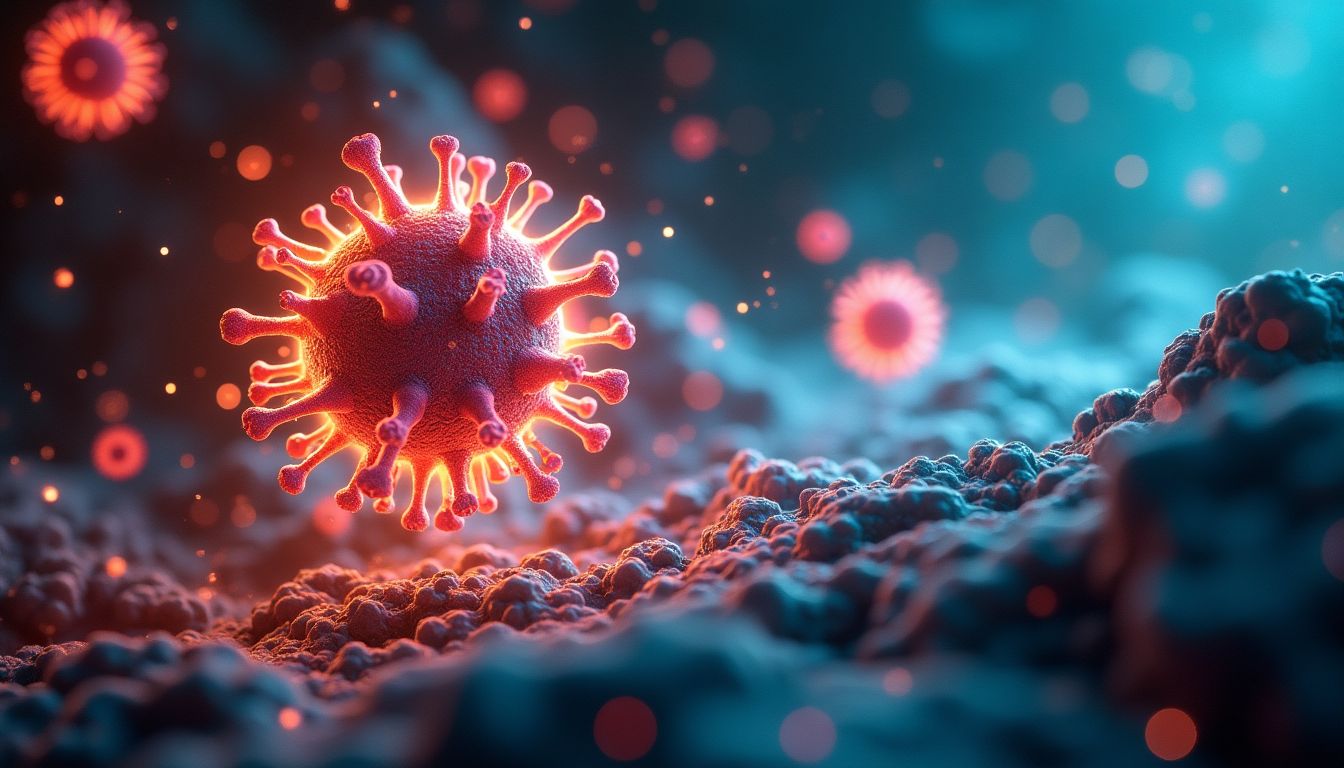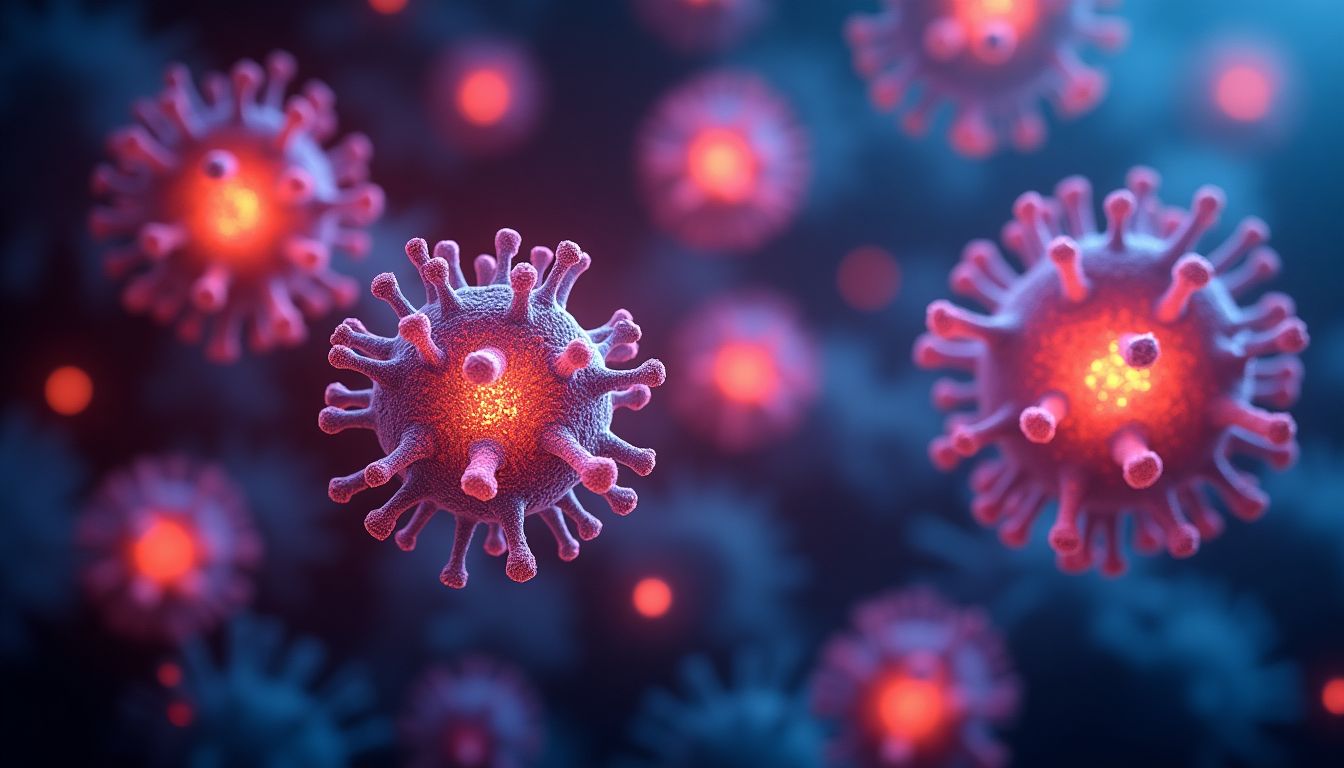Introduction: The Future of Immunity Begins Here
Sometimes the most ordinary things could be made extraordinary, simply by doing them with the right people. — Nicholas Sparks. This quote, while seemingly about the power of companionship, perfectly encapsulates the spirit of the immune revolution. Just as the right mix of ingredients can transform a bland recipe into a gourmet meal, the combination of genetic engineering and cutting-edge science is poised to revolutionize our immune systems, allowing our bodies to fight off diseases like superheroes. In an age where diseases can feel like villains lurking at every corner, isn’t it time we equipped our immune cells with the tools they need to save the day?
The immune revolution is like opening a door to a whole new world of medical possibilities. With luminaries like Dr. Anthony Fauci, Jennifer Doudna, and Carl June contributing insights to our understanding of immunity, the methodologies they advocate are reshaping how we view our body's defense mechanisms. The advancement of genetic engineering techniques, like CRISPR, is unlocking unprecedented potential, allowing us not just to react to diseases but to proactively program our immune systems to recognize and eliminate threats.
With the increase of autoimmune diseases and the shadow of pandemics casting doubt over our health futures, one must ask: what if we could teach our immune cells to be the ultimate defenders? Why settle for a leaky boat when we can create a sturdy fortress? Welcome to the immune revolution, where our cells aren’t just passengers—they’re the captains navigating the stormy seas of disease!
1. Innovations in Genetic Engineering of Immune Cells
The field of genetic engineering has witnessed groundbreaking innovations that hold the potential to alter our immune response drastically. By utilizing tools such as CRISPR-Cas9, scientists can reprogram immune cells to recognize novel antigens associated with diseases. Imagine sending your immune cells to college, where they learn to identify and combat every possible disease they may encounter, from pesky colds to sneaky cancers—now that’s a graduation ceremony worth attending!
1.1 Advances in CRISPR Technology
As we dive into the world of CRISPR, it’s like having an editing pencil for our DNA. Recent advancements in CRISPR technology are enabling researchers to make edits with such precision that they can tell the difference between a single letter on a page. This is a game changer! With its targeted approach, there's a reduced chance of leaving unintended consequences or, as I like to say, producing a hybrid gene that might grow whiskers and start singing karaoke.
1.2 Synthetic Biology and Immune Modulation
But that’s not where the excitement ends! Enter synthetic biology, heralding a new era of immune modulation. Here, scientists are designing immune cells that can not only respond to a single pathogen but adaptively tackle a horde of them. Picture a Swiss Army knife for your immune system, always ready with the right tool for any health crisis. This fantastic toolkit is paving the way for vaccines and therapies that can outsmart fast-mutating viruses and even target cancer cells with laser-like focus. Imagine having an immune system that has game nights with viruses, always strategizing on the next best way to beat them.
2. Breakthroughs in CAR T-cell Therapy
Chimeric Antigen Receptor (CAR) T-cell therapy is like giving the immune system a superhero cape. It transforms ordinary T-cells into extraordinary fighters against cancer. Imagine your body's defenses getting a high-tech upgrade; thanks to advances in genetic engineering, this is no longer just science fiction—it's happening now! This amazing therapy has opened new avenues for treating cancers. But how does it work? Let's dive deeper into the world of CAR T-cells.
2.1 The Mechanism of Action
When researchers create CAR T-cells, they look into your blood for T-cells, those brave little warriors. They then reprogram these cells by adding a new gene that allows them to recognize specific cancer cells like a loyal dog identifying its owner. Once these enhanced cells are reinfused back into the patient's body, they set out on a mission to hunt down and destroy cancer cells. This is akin to equipping soldiers with smart tracking devices in a battlefield
. You can read more about the mechanics of CAR T-cell therapy on Cancer.gov.
2.2 Expanding Beyond Cancer Treatment
But it's not just about cancers anymore! Researchers are like curious explorers, looking to expand CAR T-cell therapy’s abilities to tackle autoimmune diseases and viral infections too. Picture a Swiss Army knife that can modify itself to handle various tools! Current studies are investigating how CAR T-cells can be adjusted to target diseases such as HIV or even asthma. This expansion could mean treatments for countless patients, providing hope where there was once despair. To understand ongoing efforts in this area, check out the latest research shared by PubMed Central.
3. Designing Universal Vaccines
Imagine a world where vaccines aren’t just tailored to each illness but are universal—like a rainbow that can cover all storms! That’s where universal vaccines come in. They promise to revolutionize our approach to infectious diseases by eliminating the tedious need for specific vaccines. So, how do scientists cook up these all-in-one solutions? Let's explore!
3.1 The Science Behind Universal Vaccines
Researchers are working on ways to trigger a broader immune response, targeting multiple strains of a pathogen with a single shot. Think of it like a generalist superhero who can take on various villains without breaking a sweat. By using genetic techniques, they can create vaccines that teach your immune system to recognize many versions of a virus or bacteria. For instance, scientists are currently focused on creating universal flu vaccines that could last for multiple seasons. For a closer look into how this is done, the National Institutes of Health has some fascinating insights.
3.2 Efficacy and Real-World Challenges
However, it’s not all sunshine and rainbows. The challenges confronting scientists in developing these universal vaccines are like climbing a mountain with no guide. One major hurdle is the ever-changing nature of certain viruses, like influenza and coronaviruses. They mutate faster than a chameleon can change colors! Research is ongoing to tackle this fluidity in our pathogens and create vaccines that can keep up. It’s a race against time, but innovators are determined to keep us safer and healthier. If you’re intrigued about the latest developments in vaccine technology, the World Health Organization offers comprehensive updates and studies on their official site.
4. Tuning the Immune Response: The Role of Immunomodulators
Immunomodulators are agents that help regulate or modify the immune system's response. Imagine them as the conductors of an orchestra, fine-tuning each musician’s performance to create a harmonious sound. Just like a conductor ensures that each instrument plays at the right moment and volume, immunomodulators help our immune cells recognize the right degree of response—whether that means ramping up against a dangerous virus or calming down when the threat is no longer there.
4.1 Types of Immunomodulators
There are different categories of immunomodulators, each playing a unique role. Here’s a quick overview:
- Cytokines: These are signaling molecules that can either boost or suppress immune responses. They help communicate between cells, like sending messages in a game of telephone.
- Monoclonal Antibodies: These are lab-made molecules that can mimic the immune system's ability to fight off harmful pathogens. They are tailored to target specific antigens.
- Adjuvants: These substances are added to vaccines to enhance the body’s immune response. Think of them as a booster shot, giving our defenses an extra push.
- Immune Checkpoint Inhibitors: These help prevent cancer cells from dodging immune surveillance, allowing the immune system to recognize cancer as a threat.
4.2 Future Directions in Immunomodulation
The future of immunomodulation looks bright, as ongoing clinical trials are exploring new ways to harness these elements for chronic diseases and infections. The potential for tailored therapies designed specifically for individual patient needs is particularly promising. This personalized approach could lead to improved outcomes, reduced side effects, and overall better health management.
Here are some exciting areas of research:
- Treatment for Autoimmune Diseases: Researchers are investigating how immunomodulators can effectively balance the immune response without additional harm.
- Combining Therapies: Some trials are looking at how combining immunomodulators with traditional therapies can enhance effectiveness.
- Chronic Infection Treatments: Work is being done to develop immunomodulators that can help with infections that linger, like HIV or chronic hepatitis.
5. Ethical Considerations and Societal Impact
As we leap into this new era of immune system modifications, we must address the big, scary elephant in the room: ethics. Sure, the potential for curing diseases is astounding, but we can't overlook the concerns that come with tweaking our biology. Let’s break down the ethical issues and societal impact in an engaging way.
5.1 Navigating Ethical Boundaries
One of the primary concerns is the ethical implications of gene editing in humans. This is not a topic to be taken lightly. It’s essential to consider the long-term effects of altering genes, as these changes might be passed on to future generations. The potential for misuse of this technology raises questions:
- Could people start treating genes like a shopping list, picking and choosing traits?
- What happens if access to these therapies is limited to those who can afford it, exacerbating existing inequalities?
- How do we ensure that the research doesn't lead to unintended consequences, like immune system disorders?
To help guide research responsibly, regulations from governmental and scientific institutions will be crucial. Groups like the World Health Organization (WHO) and the National Institutes of Health (NIH) have been making strides in discussing guidelines for ethical scientific practices.
5.2 Societal Perceptions and Acceptance
Societal acceptance of these advanced therapies will play a significant role in their success. Public perception can be influenced by misinformation or fear. Education will be sent forth like a beacon of hope, shedding light on these technologies and their benefits. Here are some key points to consider:
- Public Engagement: Initiatives to demystify genetic tools could help alleviate fears and promote understanding.
- Transparency: Open conversations about potential risks and benefits are vital for fostering trust.
- Inclusion of Diverse Voices: Engaging different communities ensures that a variety of perspectives are considered when developing these therapies.
Ultimately, the success of the immune revolution hinges not just on scientific advancements but also on our collective readiness to embrace, understand, and navigate the implications that come with these cutting-edge therapies.
6. AI Solutions: How Would AI Tackle This Issue?
Artificial Intelligence is set to reshape the landscape of immune system enhancements, paving new pathways toward disease prevention and treatment. By leveraging advanced algorithms, AI can sift through vast oceans of data, uncovering patterns and insights that are often hidden from the human eye. But how exactly can this technology play a pivotal role in the immune revolution?
6.1 Machine Learning Algorithms
First off, machine learning algorithms unlock the potential to analyze massive datasets, identifying potential immune response pathways and novel therapeutic targets. For instance, researchers can collect genomic and proteomic data from patients with various diseases. By applying machine learning techniques, they can pinpoint key genetic factors that influence immune system responses, which can then inform more effective treatments. Prominent organizations, such as Google AI, are already exploring these methods to combat health issues, illustrating the vast potential of AI in medicine.
6.2 Predictive Modeling
The second step involves predictive modeling, where AI can create simulations of immune responses to engineered cells before they ever enter human trials. Continuous advancements in this area allow for a tailored approach, ensuring that individualized therapies are not only effective but also safe. For example, researchers could leverage existing data to simulate how a CRISPR-modified T-cell will react to a specific type of cancer. This approach not only accelerates the research process but also significantly reduces risks associated with clinical trials.
6.3 Personalized Medicine
Finally, the integration of genetic data into AI systems means that personalized immune therapies can be developed that are tailor-made for individual patients. Imagine a world where your genetic makeup can guide the creation of a vaccine or treatment that’s custom-fitted just for you. Companies like 23andMe are paving the way for personalized medicine by providing genetic information that can inform healthcare decisions. By marrying AI with genetic data, healthcare providers could offer therapies that maximize effectiveness while minimizing side effects, making this a cornerstone in future treatments.
Actions Schedule/Roadmap
This detailed roadmap lays out a systematic approach to achieving breakthroughs in immune system reengineering:
Day 1: Assemble a diverse team of experts. This includes immunologists, geneticists, AI specialists, and bioethicists. The collaboration should focus on creating a multi-disciplinary research environment.
Day 2: Initiate grant applications targeting funding from major institutions such as the National Institutes of Health (NIH) and private sector sponsors interested in biotechnology investments.
Day 3: Establish alliances with biotech companies like Moderna and Genentech, which have experience in genetic vaccines and therapies.
Week 1: Conduct initial meetings to establish research objectives and key milestones in the project timeline. Deliverables may include literature reviews and gap analyses in the current state of immune therapies.
Week 2: Launch a comprehensive review of existing technologies in CRISPR, machine learning algorithms, and synthetic biology applications. This should include compiling potential research papers and patents relevant to the initiative.
Week 3: Design a timeline detailing experimental protocols for large-scale immune-response simulations and begin constructing data pipelines for fast and efficient data collection and analysis.
Month 1: Develop prototypes for experimental genetic editing tools, focusing on minimizing off-target effects while maximizing efficiency in immune cell enhancement.
Month 2: Collaborate with pharmaceutical companies to develop potential immunomodulators that can be used in conjunction with immunotherapy protocols.
Month 3: Initiate preliminary experiments involving genetically modified immune cells in controlled environments to evaluate safety and effectiveness.
Year 1: Conduct comprehensive evaluations of findings and adapt methodologies based on initial outcomes. At this stage, prepare for larger-scale clinical trials by identifying potential participants and locations.
Year 1.5: Launch Phase I clinical trials, focusing primarily on safety and efficacy. Keep the public informed through a dedicated website or social media channels to build trust and educate stakeholders.
Year 2: Analyze clinical trial data thoroughly, identifying any patterns or issues that arise. Begin the scaling process for successful therapies, ensuring that logistical considerations for manufacturing and distribution are addressed. Engage in continuous dialogue with regulatory bodies such as the U.S. Food and Drug Administration (FDA) to ensure compliance and smooth market entry.
This roadmap allows any institutional body, organization, or governmental group to enact a structured plan towards not only enhancing our immune systems but also harvesting the benefits of these advancements for generations to come.
Conclusion: The New Age of Immunity
The immune revolution signifies a profound shift in our medical landscape—one where diseases can be fought with unprecedented precision. As we embrace these innovations, it’s crucial to remain vigilant about the ethical and societal implications that accompany them. With proper guidance and collaboration, we can turn our immune systems into powerful allies in our fight for health and longevity. The future beckons, promising healthier lives, and generating hope where there was once despair.
FAQ
Q1: What is the immune revolution?
A1: The immune revolution is a major shift in how we understand and improve our immune systems. Scientists are now able to genetically enhance immune cells so that they can better fight diseases. This includes everything from cancers to viruses, making it a big deal for healthcare.
Q2: How do CAR T-cells work?
A2: CAR T-cells, or Chimeric Antigen Receptor T-cells, are specially designed versions of our immune cells. They are engineered to recognize and attack cancer cells specifically. By giving these T-cells a “radar” that points them to the right target, they become super soldiers in our body's fight against tumors.
Want to dive deeper? Check out the National Cancer Institute for more information.
Q3: What role does AI play in immune system advancements?
A3: Artificial Intelligence (AI) is like a super-smart helper for scientists. It analyzes large amounts of data to find patterns that might lead to new treatments. AI can also help create models that predict how immune cells will react to different therapies, and it can even assist in customizing treatments based on a person’s genetics.
Q4: What are the ethical concerns surrounding genetic enhancements?
A4: With great power comes great responsibility. The quick advancements in genetic engineering raise several ethical questions, such as:
- Could we unintentionally create harmful mutations?
- Will everyone have equal access to these therapies?
- What does it mean to alter human genes fundamentally?
These concerns highlight the need for clear guidelines and conversation in our society about how to responsibly use these technologies.
Q5: Can these therapies treat diseases beyond cancer?
A5: Absolutely! Researchers are exploring how to apply these genetic therapies to other conditions, such as autoimmune diseases like rheumatoid arthritis and various viral infections. The goal is to leverage our own immune systems to tackle a broader range of health issues.
Q6: How does genetic engineering work in relation to the immune system?
A6: Genetic engineering works by altering the DNA of immune cells. One popular method is CRISPR, a technology that allows scientists to cut, edit, and add genes to make cells function differently. This makes it possible for these cells to recognize and attack diseases more effectively. Imagine fixing a broken robot by rearranging its parts; that’s what scientists are doing with our cells!
Q7: What are universal vaccines and why are they important?
A7: Universal vaccines are designed to provide broad protection against various strains of a disease without needing different vaccines for each type. This is particularly crucial for diseases like influenza and coronaviruses, which frequently change. By targeting everyone at once, we can boost our defenses more efficiently and quickly.
Learn more about vaccines at the Centers for Disease Control and Prevention (CDC).
Q8: Are there any success stories related to the immune revolution?
A8: Yes, there are many! One standout example is the approval of CAR T-cell therapy for certain types of leukemia and lymphoma, resulting in remarkable success rates for patients who previously had limited options. These kinds of breakthroughs give us hope for the future as more therapies are developed.
Q9: How can I stay informed about ongoing research in this area?
A9: There are lots of great resources online. Regularly check out sites like the National Institutes of Health (NIH) or subscribe to journals in immunology. Following related social media accounts can also keep you updated on breakthrough treatments and findings!
Q10: How can I contribute to this research or advocacy?
A10: You can get involved by supporting research organizations through donations, participating in clinical trials, or even advocating for policy changes regarding healthcare and access to new treatments. Every voice counts in shaping the future of medicine!
Wait! There's more...check out our gripping short story that continues the journey: The Immune Revolution
Disclaimer: This article may contain affiliate links. If you click on these links and make a purchase, we may receive a commission at no additional cost to you. Our recommendations and reviews are always independent and objective, aiming to provide you with the best information and resources.
Get Exclusive Stories, Photos, Art & Offers - Subscribe Today!





























1 comment